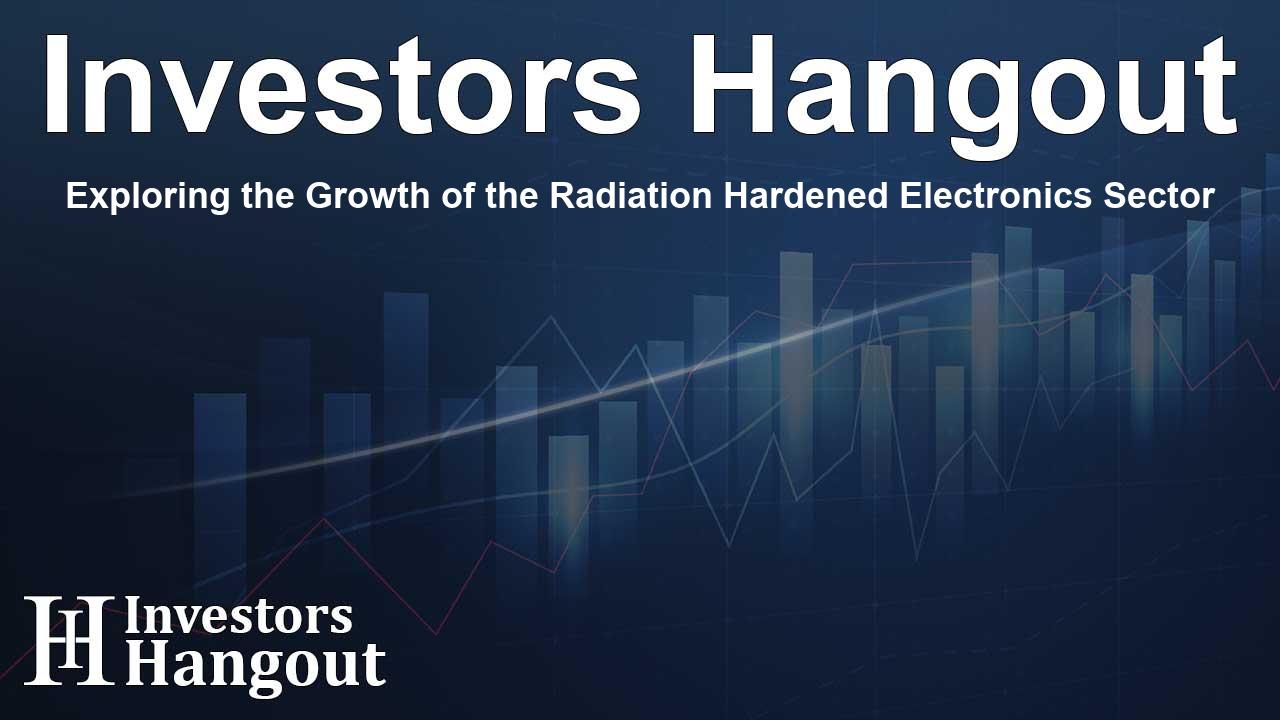Exploring the Growth of the Radiation Hardened Electronics Sector

Radiation Hardened Electronics Market Size & Insights
Austin - The Radiation Hardened Electronics market has been drawing significant attention as it evolves rapidly. It was valued at USD 1.60 billion recently and is projected to reach USD 2.35 billion within a few years, indicating noteworthy growth driven by an impressive CAGR of 4.45% between 2024 and 2032.
Factors Driving Market Growth
This remarkable growth can be attributed to several crucial factors. First, the surge in space exploration initiatives demands highly reliable electronic components that can withstand harsh radiation conditions prevalent in outer space. Terrestrial engagements such as military satellite deployments and nuclear energy applications also significantly drive the necessity for radiation-hardened devices.
National Security and Defense Applications
National security continues to be a substantial driver of this market. For military contexts, satellites play a vital role in intelligence, surveillance, and reconnaissance. Therefore, the durability of these components against radiation damage is paramount. These electronic parts ensure that data received and transmitted remains accurate, thus enhancing overall defense capabilities.
Leading Companies in the Market
The market boasts several key players known for their innovations in radiation-hardened technologies. Companies such as Microchip Technology Inc., BAE Systems, and Renesas Electronics lead the way by providing advanced solutions that meet the rigorous demands of space and defense applications. Their commitment to improving components contributes significantly to the overall health of the market.
Product Analysis: COTS vs. Custom Solutions
In 2023, Commercial Off-The-Shelf (COTS) components dominated the market, capturing a notable 55% market share. This popularity stems from their cost-effectiveness and quicker timelines, making them preferable for many projects. On the other hand, the custom-made segment is rapidly gaining traction as companies look for specialized solutions tailored to specific needs, particularly for demanding applications found in space and military sectors.
Component Insights: Power Management and Memory Needs
When analyzing components, the power management segment is currently the most lucrative, responding to increasing demands for secure data storage amid radiation exposure. At the same time, the memory components segment is projected to see the fastest growth as the need for robust data processing escalates in radiation-sensitive environments.
Manufacturing Techniques: A Shift to Innovative Practices
The market's manufacturing techniques also reflect a shift towards advanced methods aimed at enhancing the resilience of electronic components. The Radiation Hardening by Design (RHBD) technique examines the inherent design characteristics that improve performance in extreme conditions, while the Radiation Hardening by Process (RHBP) focuses on refining manufacturing techniques to elevate the robustness of components.
Applications: Space, Aerospace, and Defense
Among various applications, the space segment is currently the largest, holding 40% of the market share. This is driven by the critical need for radiation-hardened electronics in satellites and spacecraft that regularly face high radiation levels. Meanwhile, the aerospace and defense sectors are projected to experience significant growth as military operations increasingly incorporate advanced technologies that demand reliable electronics for mission success.
Regional Market Dynamics
Geographically, Asia Pacific and North America emerge as key regions in the radiation-hardened electronics market. The growth in Asia Pacific is largely driven by substantial investments from nations like China and India in their space programs, while North America maintains strong market presence due to its military and space research dominance.
Frequently Asked Questions
What is the projected market size for radiation-hardened electronics?
The market is expected to reach USD 2.35 billion by 2032, growing at a CAGR of 4.45%.
What are the main drivers for this market growth?
The key drivers include the need for reliable components in space exploration, defense applications, and national security initiatives.
Who are the leading companies in this sector?
Major players include Microchip Technology Inc., BAE Systems, Renesas Electronics, and Infineon Technologies AG, among others.
What products dominate the market?
Commercial Off-The-Shelf (COTS) components lead the market, but custom-made components are increasingly gaining ground.
What segments are expected to grow most in the coming years?
Memory solutions and custom-made electronics are anticipated to experience the fastest growth due to rising demand in specific applications.
About The Author
Contact Addison Perry privately here. Or send an email with ATTN: Addison Perry as the subject to contact@investorshangout.com.
About Investors Hangout
Investors Hangout is a leading online stock forum for financial discussion and learning, offering a wide range of free tools and resources. It draws in traders of all levels, who exchange market knowledge, investigate trading tactics, and keep an eye on industry developments in real time. Featuring financial articles, stock message boards, quotes, charts, company profiles, and live news updates. Through cooperative learning and a wealth of informational resources, it helps users from novices creating their first portfolios to experts honing their techniques. Join Investors Hangout today: https://investorshangout.com/
The content of this article is based on factual, publicly available information and does not represent legal, financial, or investment advice. Investors Hangout does not offer financial advice, and the author is not a licensed financial advisor. Consult a qualified advisor before making any financial or investment decisions based on this article. This article should not be considered advice to purchase, sell, or hold any securities or other investments. If any of the material provided here is inaccurate, please contact us for corrections.
